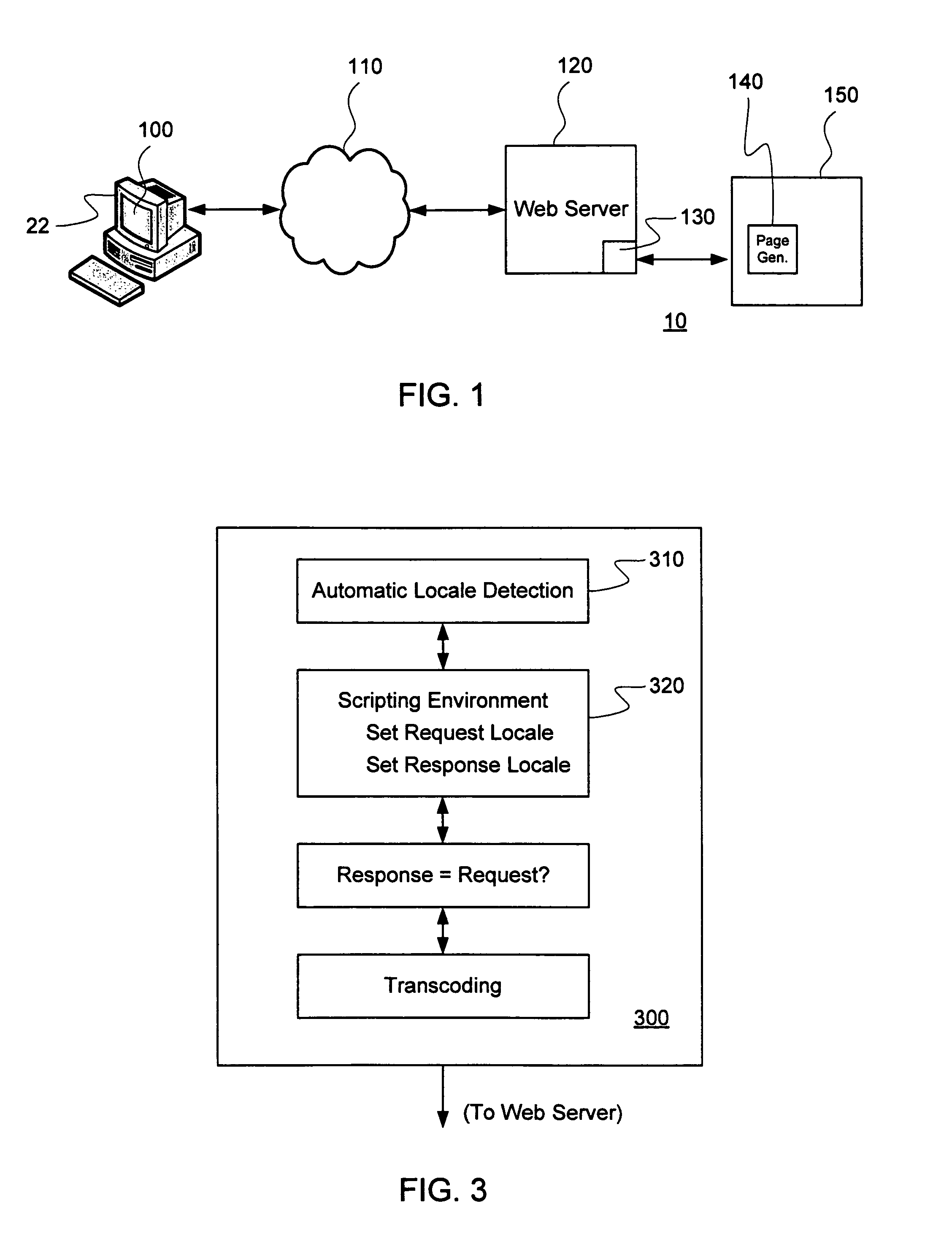Method and system for cache management of locale-sensitive content
a content cache and locale technology, applied in the field of clientserver computer network operation, can solve the problems of not being able to provide content in a locale-specific manner to visitors, not being able to provide content in a clear way for multi-lingual visitors,
- Summary
- Abstract
- Description
- Claims
- Application Information
AI Technical Summary
Benefits of technology
Problems solved by technology
Method used
Image
Examples
Embodiment Construction
[0035]Preferred embodiments of the present invention are illustrated in the FIGUREs, like numerals being used to refer to like and corresponding parts of the various drawings.
[0036]Together with, for example, the inventions disclosed in the Caching Application, the Cache Management Application, and the Locale Detection Application, the embodiments of the method and system of this invention can provide the capability to, in a client-server computer network (such as the Internet), transparently generate, cache, and distribute multiple locale-sensitive versions of the same dynamically-generated content such that appropriate versions of the content can be delivered to users in corresponding locales. In particular, the embodiments of the present invention provide the ability to generate a new version of, for example, a customized page, following a regeneration event (e.g., the content changes) to automatically replace the superseded version of the customized page without a significant de...
PUM
 Login to View More
Login to View More Abstract
Description
Claims
Application Information
 Login to View More
Login to View More - R&D
- Intellectual Property
- Life Sciences
- Materials
- Tech Scout
- Unparalleled Data Quality
- Higher Quality Content
- 60% Fewer Hallucinations
Browse by: Latest US Patents, China's latest patents, Technical Efficacy Thesaurus, Application Domain, Technology Topic, Popular Technical Reports.
© 2025 PatSnap. All rights reserved.Legal|Privacy policy|Modern Slavery Act Transparency Statement|Sitemap|About US| Contact US: help@patsnap.com



